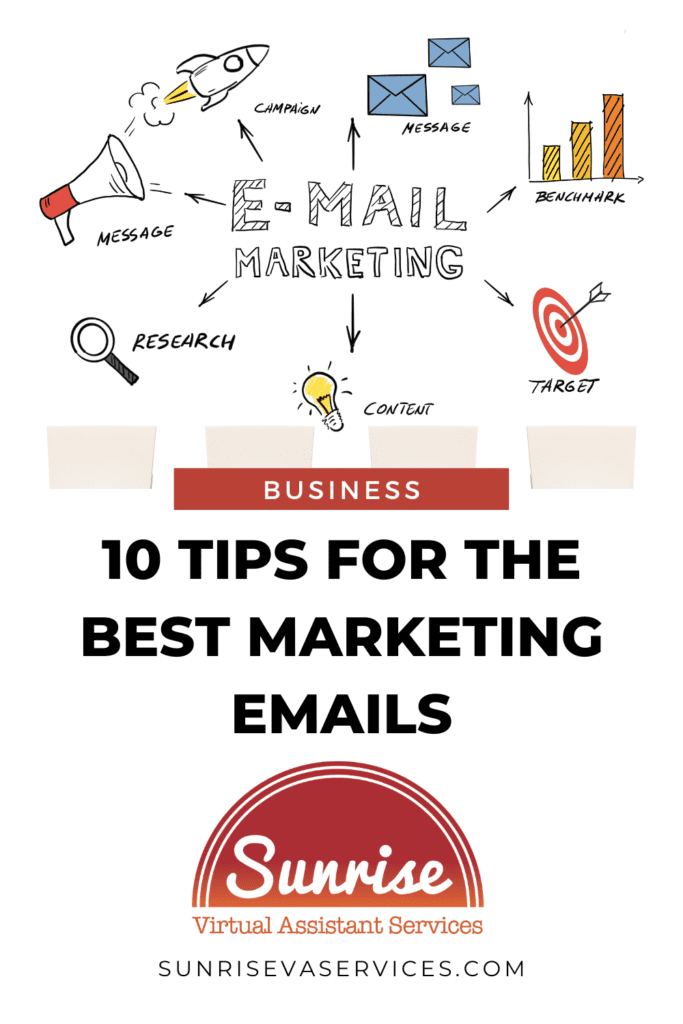Crafting effective marketing emails can take a lot of effort. However, it can be simple and manageable with the right approach and some tips along the way. With these ten tips for marketing emails, you’ll be able to enhance your impression and cultivate customer loyalty with informative, impactful marketing campaigns.
From writing subject lines that entice customers to open up emails on mobile devices to utilizing segmentation to target specific customers, this guide will get you started in creating the best marketing emails. So buckle up, and get ready for your marketing emails to reach new heights!
1: Make The Subject Line Engaging
Subject lines can be a powerful way to draw in readers, but crafting the perfect email subject line is challenging. Here are some email marketing tips on how to make email subject lines engaging:
Promise something
Promises effectively engage readers and encourage them to open the email. Try using phrases such as “Increase your lead generation by 25% with our new system!” or “Discover the secret to success with this simple trick!” to draw people in.
Forge intrigue
Intriguing emails grab attention and, if done right, get people clicking on your email. Think of titles that drive people to click. Cosmopolitan, while not the most reliable source for accurate news, does an excellent job of creating titles that drive traffic. Like this: “What Happens When Men Take Hormonal Birth Control?”
Use lists
People are more likely to click on emails that stand out from the rest – and what stands out more than numbers and lists? For example, try “The 6 most common mistakes influencers make” or “9 tips for better time management.”
Ask a question
Questions can be an effective tool for getting people interested in opening your email—after all, everyone loves answering questions! Try something like “Want to know how to reach more customers?” or “Do you know how to double your sales?”
Create a sense of urgency or scarcity
Scarcity is another persuasive marketing tactic that encourages people to act fast before they miss out – making them more likely to act upon the offer you present in the email body content. Something like “Only 15 remaining! Don’t miss out!” will do well here!
Be straightforward
Research suggests that 50 characters are the ideal length for a clear subject line – any longer than this could lead potential readers astray into their spam folder instead of their inboxes! However, there are times when you may want your subject line to be slightly longer – when this happens, write it 50% longer than usual with more details and facts, as well as higher semantic richness, so it stands out from the crowd while still being concise.
Within a comprehensive email marketing strategy, you may want to try different subject lines for a series of emails that may contain the same information; this can also be a great way to run A/B testing on click-through rates to discover what style of compelling subject line works best with your target audience.
2: Take Advantage Of Message Previews
When writing marketing emails, taking advantage of message previews is a great way to ensure your message resonates with the recipient. Message preview text provides a brief description or preview of what an email contains and can be shown in an email list view or on an individual email. The idea behind having a message preview is to quickly provide email recipients with enough information to decide if they want to open the mail and read it thoroughly.
When creating a message preview for marketing emails, it’s important to ensure that you include concise but compelling copy that’s less than 140 characters and accurately reflects the contents of the email. Keep in mind that people are scrolling through their inboxes quickly, so you only have a few seconds to capture their attention and entice them to read further.
3: Add A Personal Touch
When crafting marketing emails, it is important to avoid the feeling that one is broadcasting a generic message to many people; instead, one should strive to make it feel as though each recipient is transferring a personal dialogue between themselves and the sender.
By writing as though you’re addressing a person, your target customer will be able to relate more easily to what you are proposing. The key is to use language that builds a connection with the reader and considers the unique characteristics that make them special.
Using this type of marketing strategy will help create greater engagement with your content, allowing for deeper connections with the customer base that can lead to a higher open rate, increased conversion rates, loyalty, and sales.
4: Have a Point To An Marketing Email
A successful email marketing campaign requires clearly defined goals. And let’s be honest-how often do we open an email to discover that we have yet to learn what this person is talking about selling, or how we ended up on their mailing list, to begin with?
Best practices indicate that your emails should have a purpose. Know what message you’re trying to send, get your facts straight, choose the right subject line and style of writing that resonates with your audience, and double-check for spelling and grammar errors before sending out an email marketing campaign.
Additionally, be sure to ask yourself a few key questions, such as: Who am I targeting? What action do I want them to take? Why should they care about my message?
This way, you’ll better understand how to structure your marketing emails to reach specific audiences and engage them in meaningful ways, for better results
5: Collect and Analyze Data
Email marketers should measure the success of email marketing campaigns by monitoring email campaign statistics to understand their subscribers better. Analytics services with most email marketing platforms allow email marketers to see open rates and trackable links with conversion statistics.
By analyzing this data, email marketers can understand what works effectively for their particular audience and use it to adjust content and future strategies to maximize their email campaigns’ success.
6: Don’t Make Subscribing Difficult
To make it easier to subscribe to email newsletters for email marketing efforts, it is best to focus on three simple steps: add a sign-up form to your website, promote your email list on social media, and make the email sign-up process effortless. With a sign-up form prominently displayed on your website, visitors can opt into email marketing conveniently and quickly.
Furthermore, promoting your email list on social media platforms allows you to reach larger audiences who may be interested in subscribing.
Lastly, requiring too much information from email subscribers will likely result in them becoming disinterested and opting out of signing up altogether; stick with the basics and let people decide how much they are comfortable sharing.
7: Make Sure Your Emails Transcend Platforms
An email marketing campaign should allow for different platforms to ensure the most effective reach. In addition to HTML and plain text formats, email marketing software should also be developed with mobile users in mind, as 66% of email marketing messages are opened on smartphone or tablet devices.
Therefore, when sending out your campaigns, ensure the email template you use is responsively designed or has a mobile-friendly option for the best visibility and user experience. This way, you’ll optimize your email campaigns for various platforms.
8: End Each Email With A CTA
Every email should end with a small but powerful call to action. If small business owners have already established what they want their subscribers to do in their message, crafting a compelling call to action becomes easy. Every small business wants more people visiting their website, clicking on special offers, taking advantage of discounts, and buying their products and services – all of which enhance brand awareness.
A clear and concise call to action can encourage readers to be the kind of audience small businesses need. Small business owners should use a professional but friendly tone when writing calls to action that can capture the attention of their subscribers and help to reach the goals they’ve set out for themselves.
9: Avoid Spammy Copy
When sending emails, you want to be sure they don’t get marked as spam. To increase the chances of your email beating the spam filter algorithms, include a clear “unsubscribe” link in every mail you send.
Avoid any words or phrases that may set off a spam filter, such as “guaranteed,” “credit,” or “100%.”
It is essential to obey the CAN-SPAM act when sending emails; this includes:
- Not adding people to your list who did not request it.
- Being honest with your subscribers.
- Including a valid postal address.
10: Keep Track Of Campaigns With A Content Calendar
Businesses must make the most of their email marketing strategies, and one way to ensure this is by using a content calendar. This allows you to plan ahead and set dates for when you should send emails, ensuring consistency with your messages.
Having a solid content plan also helps build trust with your subscribers, as they know what kind of emails they will receive from you. Furthermore, by including ideas for content in the calendar and significant events or occasions, you can mix up your communication so that it remains exciting and engaging.
A content calendar can offer many benefits to email marketing campaigns and make them much more successful overall.
Need Help With Email Marketing?
Sunrise Virtual Assistant Services is an invaluable resource for small businesses and entrepreneurs who want to enhance their email campaigns. Our extensive email marketing services make it easy for users to refine their email strategy, from crafting compelling email content to designing professional templates. Whether you are a beginner or an expert in email marketing, we have the perfect package for you.
Have you already taken your team’s email campaign to great heights? Contact Sunrise Virtual Assistant Services today and see how we can take it even further!


